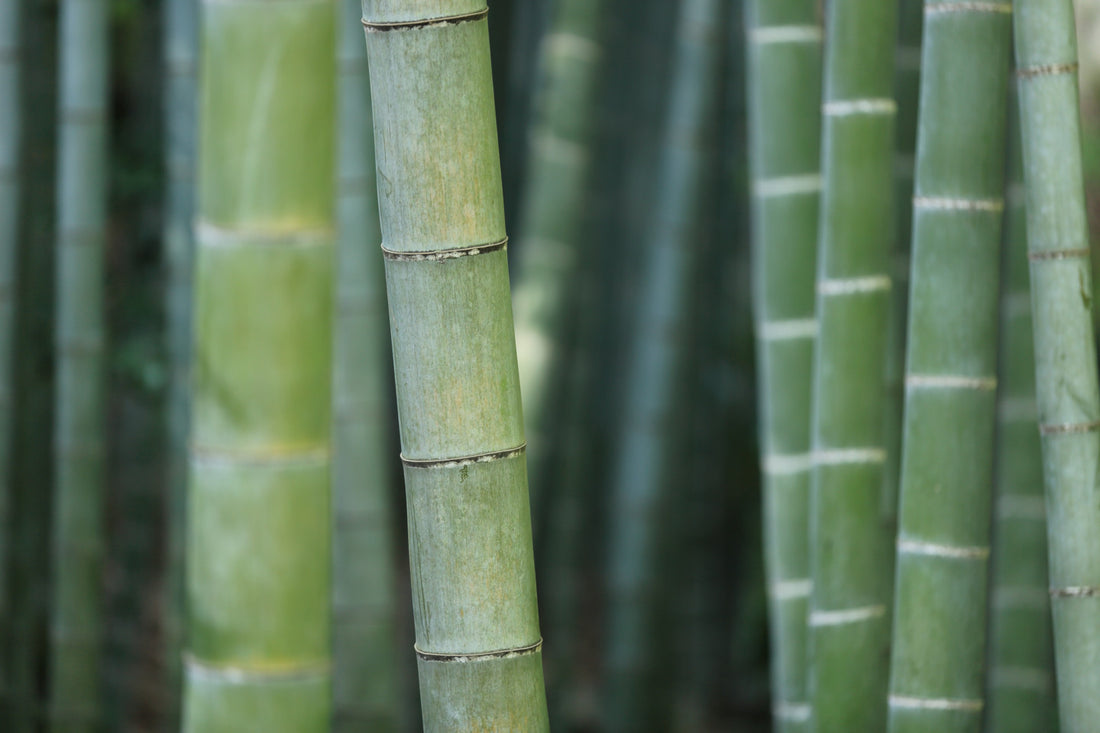Is Bamboo really more sustainable?
January 28th, 2020
Here at Ergonomyx, we place a great emphasis on sustainability. Whether it be
something as small as not using plastic straws in the office to using the most
environmentally friendly materials for our products, we know that every
decision we make, no matter how small, can have a significant impact on our
future. This is why we’ve developed a completely self-contained energy
harvesting system for our
Under-the-Desk Bike
as well as use 100% sustainably grown bamboo for our
Sit-and-Stand Desk
table tops.
Now, what makes bamboo a more sustainable choice than the classic wood?
1. Bamboo is a renewable resource: According to the
Food and Agriculture Organization's 2016 State of the Forests report , 7 million hectares of forest are lost annually. In order to be harvested,
hardwoods such as oak take at least 40 years, whereas bamboo can be harvested
in as little as 5 years. Furthermore, bamboo has an extremely fast growth
rate. Did you know bamboo can grow up to 3 feet per day? No wonder it is
labelled as the fastest growing plant on earth!
2. Bamboo can grow in a variety of climates: Since bamboo is a very
durable plant, it can be seen in almost every region of the world; from
wetlands to mountains, bamboo is an abundant natural resource that can be used
for many things. Bamboo also does not need to be replanted. After being
harvested, the plant will grow a new shoot as a result of its widespread root
system and help protect against soil erosion.
3. Bamboo is carbon neutral: Not only is bamboo grown without
pesticides or chemical fertilisers, but it actually produces
35% more oxygen than the equivalent amount of trees.
In fact, bamboo plantations can be used as areas that are able to reduce CO2
from the atmosphere and are considered effective “carbon sinks”.
Although bamboo is considered a more sustainable choice than its wood
competitor, it still faces controversy on the extent of its ecological
prowess. This is because different uses of bamboo result in varying
environmental impacts.. In furniture (such as our Sit-and-Stand Desk) bamboo
remains in its raw and unmanipulated form, but when used for other purposes
such as clothing, bamboo must go through a
harsh chemical process with the use of Carbon Disulfide. This procedure ends up creating hazardous working conditions and
contributing to global pollution through Carbon Disulfide’s ability to
evaporate into the air and run off into waterways.
So overall, is bamboo really a more sustainable choice? Well, yes and no.
Similarly to other materials, bamboo does have its faults and must be used
correctly in order to truly be considered an eco-friendly option. Thankfully,
in regards to furniture and Ergonomyx’s Sit-and-Stand Desk, the bamboo used is
a particularly sustainable alternative to it’s wood counterpart..
To learn more about our Sit-and-Stand Desk, as well as some of our other
products,
click here.

